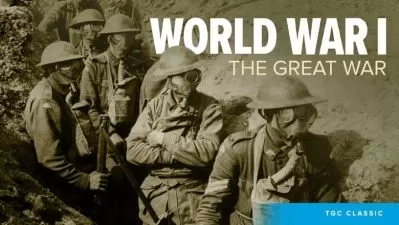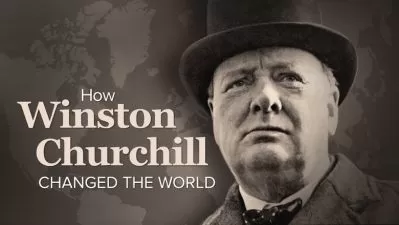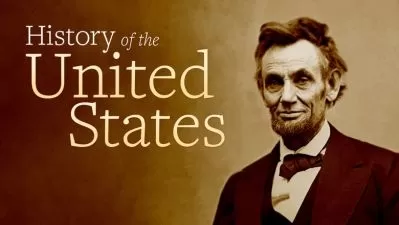African American History: From Emancipation through Jim Crow
Hasan Kwame Jeffries
6:59:56
Description
As soldiers, strikers, writers, activists, and even baseball players, African Americans have fought to be free and equal persons in the United States. The nature of this fight changed throughout the 19th and 20th centuries, in part because the social, political, and economic systems that upheld white supremacy changed as well. After Northern Republicans failed to complete Reconstruction in the Southern United States after the Civil War, many white Americans relished the opportunity to oppress, segregate, and disenfranchise African Americans, all over again. White Americans instituted sharecropping, engaged in extrajudicial violence, redlined, and segregated schools. Even still, in the face of rampant discrimination and violence from their fellow countrymen, African Americans persisted and resisted, from the post-Civil War Emancipation through the Jim Crow period. In doing so, they laid the groundwork for the Civil Rights Movement of the 1950s and 1960s. And their work, even when not successful at the time, laid the foundation for vital change in the future.
In African American History: From Emancipation through Jim Crow, join Hasan Kwame Jeffries, Associate Professor of African American history at The Ohio State University, to learn about the African American struggle for freedom and civil rights from 1865 to the 1940s. In 12 lectures, accompany Hasan on a journey from Reconstruction to Jackie Robinson’s first Major League Baseball game, examining the unique struggles faced by Black Americans who were technically free but increasingly limited in what they were able to do. Get to know key Black figures from Black Nationalist Marcus Garvey to socialist activist A. Philip Randolph. Investigate how, even after slavery, the scourge of white supremacy persisted in many different forms. And discover the remarkable resilience and creativity of African Americans facing astronomical social, political, and economic obstacles.
White Supremacy after Slavery
Although slavery had ended in the United States in 1865, white supremacy had not. It was a pernicious evil that often took many forms—from the Jim Crow laws in the South to housing discrimination in the North. In virtually every sector of public life, from the workplace to the Olympic games, the same kinds of freedoms and comforts enjoyed by white people in the United States were simply not extended to African Americans.
In the 12 lectures of African American History: From Emancipation through Jim Crow, you will explore the myriad ways white Americans disenfranchised and discriminated against their fellow Black countrymen after the Civil War. You will examine why Reconstruction failed to establish a more equitable society in the South. You will learn about how extrajudicial violence swept across American cities, destroying the lives of so many Black men, women, and children, who were searching for safety, security, and opportunity. You will investigate the pivotal court decisions that rolled back key African American rights. You will see how discrimination and segregation impacted Black athletes and soldiers. And you will study the commitments to white supremacy that loomed in the background of politics and public policy, from Reconstruction right up until the Civil Rights Movement of the 1950s and 1960s.
African American Resilience
The Black experience between Reconstruction and the end of Jim Crow in the United States was defined by struggle. But African Americans did not sit idly by as their white counterparts stripped them of their fundamental human and civil rights. They fought back in cities, on farms in the South, from the Berlin Olympics in Germany, and through the might of writers’ pens. Whether these efforts were ultimately successful did not matter. They not only highlighted the remarkable tenacity of a historically maligned and mistreated group, but they also laid the ever-important groundwork for a movement that would deal a significant blow to white supremacy in the United States in the middle of the 20th century.
In African American History: From Emancipation through Jim Crow, you will see how African Americans expressed their frustration with and fought back against the unique problems they were facing at the time. Dig into the battles waged in all areas of public and private life, including:
- The Arts. In the 1920s, a new generation of African Americans told stories about their lives and community through art. Zero in on the Harlem Renaissance to see how musicians, artists, and writers depicted the Black experience in Northern cities.
- Intellectual Life. In the face of increasing hostility from their white countrymen, African Americans took to Black Nationalism, a complicated ideology that gained steam in the early 20th century. Get to know the popular movement, as well as the man behind it.
- Sports. Jackie Robinson was the first Black athlete to play in Major League Baseball, but he was not the only African American challenging the stubborn color line in sports. Investigate how Black athletes fared in the United States before the Civil Rights Movement and see how their successes in sports instilled hope for a badly battered community.
- The Courtroom. Black lawyers and legal organizations did not give up after Plessy v. Ferguson, the infamous court case that codified the “separate but equal” doctrine across the United States. Evaluate the legal fights waged against voter suppression, segregation in schools, extrajudicial violence, and bogus convictions between 1865 and 1947.
- Politics. While many African Americans were barred from voting, especially in the South, they could still influence politics. From Executive Order 8802 to the attempts to pass federal anti-lynching legislation, explore the impact of Black political activism before the Civil Rights Movement.
- The Military. From the Civil War to World War II, African American soldiers were segregated and discriminated against. Investigate how Black activists fought to reshape the military in the United States.
- The Workplace. The economic exploitation of African American labor did not end with abolition; it persisted with sharecropping and poverty wages for Black workers. Discover how activists like A. Philip Randolph and organizations like the Citizens League for Fair Play lobbied for greater economic opportunity and mobility for African Americans.
The period between 1865 and 1947 was a violent, dark stretch of time across the United States. The freedom that African Americans had longed for and fought hard to achieve was being taken from them, piece by piece by piece. They could not vote in the post-Reconstruction South. They were accused of and killed for crimes they did not commit. They could not reap the benefits of a booming wartime economy. And they were not able to participate in formal political life. But African Americans across the country kept on going. They clutched onto their unalienable right to life, liberty, and the pursuit of happiness and would not settle for less. In doing so, this resilient generation of activists, soldiers, athletes, artists, marchers, entrepreneurs, and workers paved the way for a movement that would fundamentally alter the course of American history. Using their lives as lenses, African American History: From Emancipation through Jim Crow tells a comprehensive story about an often overlooked but key period of Black history.
More details
User Reviews
Rating
Hasan Kwame Jeffries
Instructor's CoursesHasan Kwame Jeffries is an Associate Professor of History at The Ohio State University who teaches, researches, and writes about the African American experience from a historical perspective. He earned a PhD in American History with a specialization in African American History from Duke University. He is the author and narrator of the Audible Original series Great Figures of the Civil Rights Movement, and he tells the remarkable story of the original Black Panther Party in Bloody Lowndes: Civil Rights and Black Power in Alabama’s Black Belt. He is the editor of Understanding and Teaching the Civil Rights Movement and the host of the podcast Teaching Hard History.

The Great Courses
View courses The Great Courses- language english
- Training sessions 13
- duration 6:59:56
- English subtitles has
- Release Date 2023/08/19






















